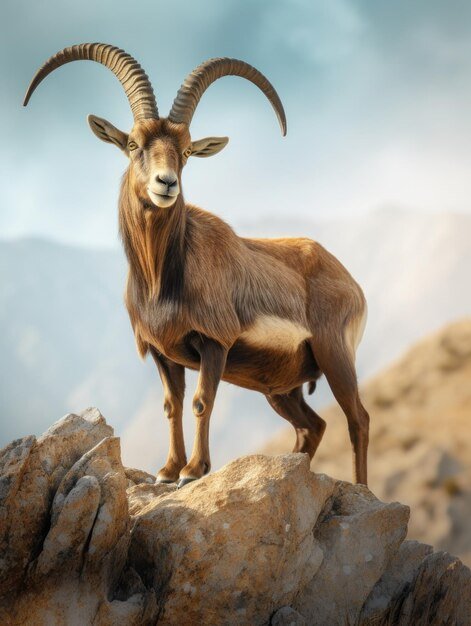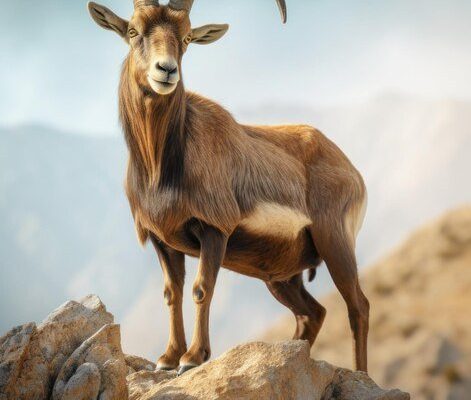
Ibex are not just another hoofed animal; they play a crucial part in maintaining the health and diversity of their habitats. Their presence influences plant growth, supports other wildlife, and even aids in the cycling of nutrients in their landscapes. Let me explain why this is all so important and how the humble ibex is a key player in the ecosystem.
What Is an Ibex?
To kick things off, let’s get to know the ibex a little better. An ibex is a rugged, mountain-dwelling goat known for its impressive climbing skills. They are easily recognizable due to their long, curved horns and sturdy builds. There are several species of ibex, such as the Alpine ibex found in the European Alps and the Nubian ibex in arid regions of the Middle East.
What’s particularly impressive about ibex is their adaptability. They thrive in harsh environments where few other animals can survive. Their specialized hooves allow for incredible grip on steep and rocky terrains, making them masters of their mountainous domains. Imagine scaling a steep cliff with ease—ibex do this daily as they navigate their rugged homes in search of food and shelter.
Ibex as Herbivores
Here’s the thing: ibex are herbivores, which means they primarily eat plants. This includes grasses, shrubs, and even tree bark. You might be wondering, “Why does that matter?” Well, their grazing habits have a big impact on their ecosystems.
When ibex graze, they help control the growth of certain plants, preventing any single species from overtaking the landscape. This grazing activity promotes biodiversity by allowing a variety of plant species to thrive. Think of it like a lawnmower that keeps your grass healthy—without it, you’d end up with a jungle rather than a neat garden.
Moreover, as ibex move through their habitat, they often disperse seeds through their droppings, which fosters plant growth in new areas. This natural form of planting helps maintain the balance and health of the ecosystem.
Role in Nutrient Cycling
Another fascinating aspect of ibex is their contribution to nutrient cycling. By feeding on plants, they’re not just munching without a purpose. When they digested, the nutrients from those plants get broken down in their bodies and are eventually returned to the soil through their waste.
This process enriches the soil, making it more fertile for other plants. It’s a bit like how composting works; by recycling organic material, you create an environment where new life can flourish. In areas where ibex are present, scientists often notice healthier vegetation, which supports a wider array of wildlife.
So, in a way, ibex are nature’s recyclers, ensuring that nutrients are continually cycled and available for new plants to grow.
Supporting Other Wildlife
One of the most important roles of the ibex is its impact on other wildlife. By maintaining plant diversity and contributing to nutrient cycling, they create a healthier ecosystem overall.
When ibex graze and roam, they create pathways through dense vegetation, which can make it easier for other animals to navigate their environment. This is especially beneficial for smaller creatures that might find it challenging to move through thick underbrush.
Ibex also serve as prey for larger predators, such as wolves and eagles. This predator-prey relationship is crucial for maintaining the balance of the food chain. Without ibex, these predators would struggle to find food, which could lead to a ripple effect throughout the ecosystem.
Threats to the Ibex and Their Habitat
Unfortunately, ibex face several threats in today’s world. Habitat loss, climate change, and hunting have all taken a toll on their populations. As their natural habitats shrink, the delicate balance they help maintain is put at risk.
Many conservation efforts are in place to help protect ibex populations and their habitats. These include creating protected areas and implementing sustainable tourism practices that allow people to enjoy these magnificent animals while ensuring their survival.
Without the ibex, we might lose more than just a fascinating species; we risk disrupting the entire ecosystem where they play such a vital role.
In summary, the ibex is much more than a mountain goat known for its impressive climbing skills. It plays a crucial role in its ecosystem as a herbivore, nutrient recycler, and a supporter of other wildlife. By maintaining plant diversity and participating in food chains, ibex help create a balanced environment that benefits a host of other species.
So, the next time you think about the creatures that call the mountains home, remember the ibex and the essential part it plays in the grand tapestry of nature. It’s a reminder of how interconnected we are in this world and how every piece of the puzzle matters.

